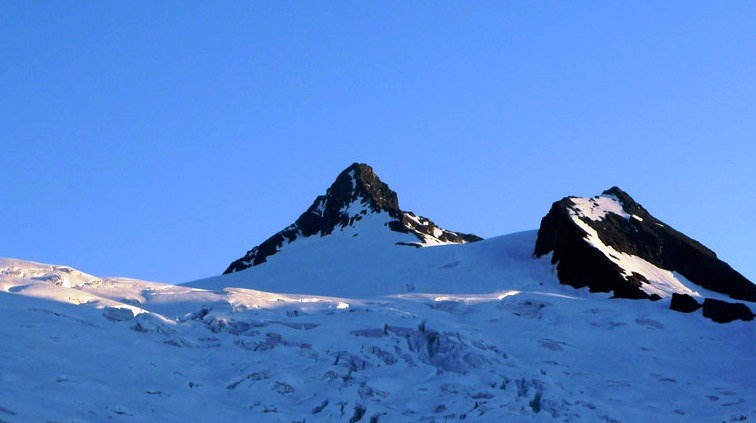
[Leader]
This incident was a close call because fortunately no injury occurred.
After summitting Mount Shuksan via the Sulphide Glacier route, rappels were set up for the descent off the summit block. The plan was to set up the long rappel to speed everyone down even though the terrain could have been scrambled (but more slowly).
The ropes were 7.8 mm diameter and 60 meters long. When used for rappelling, these ropes stretch a lot.
One party member had already descended and was well below the rappeller, scrambling in easy terrain.
The rappeller (nearing the end of the rappel) stopped on a level ledge to shake out the tangled rappel lines before completing the descent.
When the ropes were re-weighted as the rappel resumed, the rappeller was surprised by the amount of stretch and he ended up running down the low angle rock slab to keep his balance.
The running rappeller quickly closed the gap between himself and the scrambling party member. The two collided just as the stretching ended.
The rappeller realized the collision was going to happen and successfully grabbed and held the scrambler, preventing the scrambler from being knocked down the low angle terrain.
All ended well with no injury but there were several lessons here:
- Scrambling and rappelling in the same area is unwise and risky, even if the angle is low.
- The scrambling participant had helped shake out the rappel lines from the bottom, but should have stayed well out of the fall line of the rappel.
- The rappeller should not have proceeded while the other party member was directly below.
- The amount of rope stretch came as a surprise. The rappeller had no previous rappel experience using thin glacier ropes, nor had he previously stopped partway down a rappel to untangle ropes, unweighing the ropes in the process. No one thought to alert him to the possibility of a large amount of stretch when he resumed his rappel.
Add a comment
Log in to add comments.I don't understand the scenario. When the rappeller stopped and untangled the rope below, wasn't the rope between the rappeller and anchor still weighted and taut? How was slack introduced into the system above the rappeller?
There was no explanation in the incident report. I think that when the rappeller stopped on low angle terrain to deal with the rope ends, the rappel rope was not weighted at that time.
 David Shema
David Shema